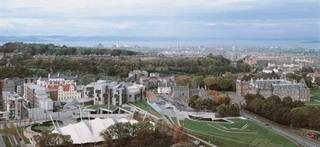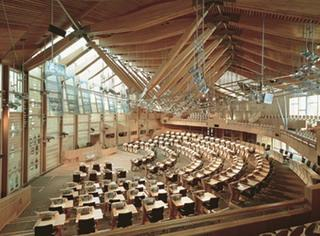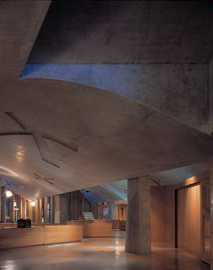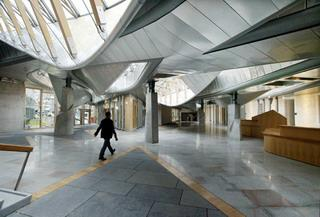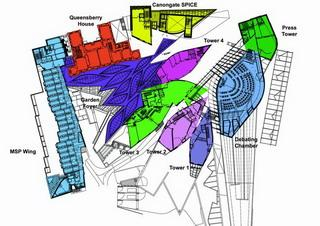The Scottish Parliament
THE OPEN SITE...
The land itself will be a material, a physical building material. We would like the qualities that the peat gives to the water and turf were the basis for the new Parliament.
This is a way of making a conceptual distance from Holyrood Palace. Whereas the Palace is a building set on the landscape, related to the gardening tradition, the Scottish Parliament would be slotted into the land.
The perception of the place and the scale of the site will change drastically when the end of Canon Gate is opened.
THE PARLIAMENT SITS IN THE LAND, because it belong to the Scottish land.
From the outset we have worked with the intuition that individual identification with land carries collective consciousness and sentiments.
The Parliament should be able to reflect the land it represents. The building should arise from the sloping base of Arthur s seat and arrive into the city almost surging out of the rock.
THE SEATS OF THE PARLIAMENT ARE
A FRAGMENT OF A LARGE AMPHITHEATRE
WHERE CITIZENS CAN SIT ON THE LANDSCAPE.
The natural amphitheatre will be the first form in the land. We hope that what emerges from this form is a series of identifications between the building and the land, between land and citizens, between citizens and the building. Not just an image but a physical representation of a participatory attitude to sit together - gathering.
Instead of an overwhelming monument, which only relates to dimensions and rhetorical forms, we like to think about it in terms of a psychological approach.
What is the mental image of the new Parliament?
How will all of us, citizens, relate in our mind to the new Parliament?
The Parliament should belong to a broader concept. The specific place should not be crucial. The Parliament building should come out of a clear and strong statement
in a way independent of site circumstances



